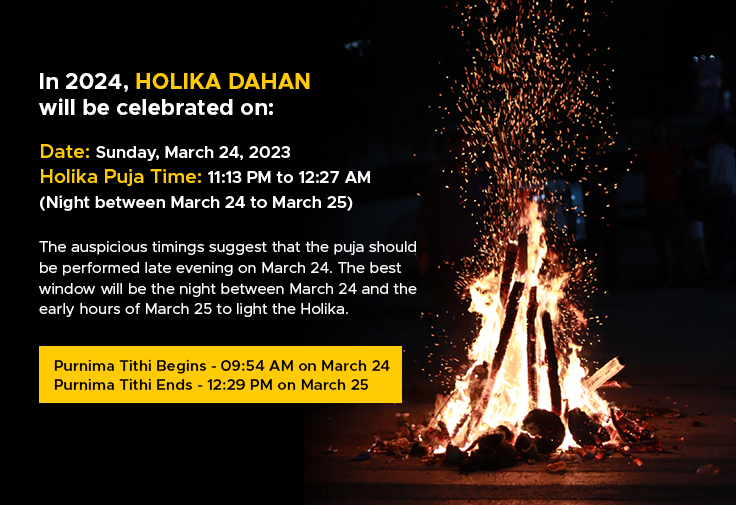 With March, the joy of one of the most awaited festivals arrives in India. Holi 2024, the festival of colours, will be celebrated on March 24, 2024, a night before Rangwali Holi. Holi has held a significant place in the culture of the country, with the day holding unmatched significance for the people.
With March, the joy of one of the most awaited festivals arrives in India. Holi 2024, the festival of colours, will be celebrated on March 24, 2024, a night before Rangwali Holi. Holi has held a significant place in the culture of the country, with the day holding unmatched significance for the people.While many believe Holi to be the real beginning of the festival of spring, a large number of people call the two-day celebration of colours the festival of love as well. In popular belief, Holi is the day when two people can forget their differences and join together to celebrate the festival as friends and family.
The two-day celebration of Holi, however, finds a special place in the scriptures and epics of India. These ancient texts describe the beginning of the festival of Holi and why it is celebrated in an entirely different manner. In this blog, let’s understand the history and rituals of Holi and understand its real meaning.
Legends of Holi
In the Bhagavata Purana, there is a mention of the Demon King, Hiranyakashipu, who received a boon of 5 special powers that he could not be killed by either a man or animal, neither in day or night, neither indoors nor outdoors neither by “Astra” or “Shastra” (handheld weapon), and neither on land, in water or in air. This made the King arrogant of his powers, and he began to think of himself as a god.The King’s son, Prahlada, was a devoted follower of Lord Vishnu and refused to accept his father’s arrogance. Infuriated by this act, the Demon King subjected Prahlada to violent punishments. Finally, the King’s sister, Holika, stepped forth with a fire-proof blanket and tricked her nephew to sit on her lap in a pyre. With a miracle, the blanket flew from Holika and wrapped itself around Prahlada, thus burning Holika and saving Prahlada.
From the fire, Lord Vishnu was reincarnated in the form of Narasimha, half-man, half-lion. Narasimha slew Hiranyakashipu on his doorstep at the time of dusk, on his lap, and with his claws, thus not violating any of the King’s special powers. This is why Holi celebrations include Holika Dahan, a ritualistic recreation of the Pyre that began the end of evil and marked the triumph of good.
Rituals and Celebration of Holi in India
Celebrated on the full moon day of the Hindu month of Phalguna, Holi is a 2-day celebration. Known as the last full moon of winter, the celebrations begin at dusk on the first day when the bonfires are lit as an ode to Lord Vishnu and his reincarnation to fight evil in the world. This day is known as Holika Dahan, and people take embers from these bonfires to light up the smaller bonfires in their own homes as a part of bringing the Lord’s blessings to their houses. Here is the required Muhurat information on Holi 2024. Date: Sunday, March 24, 2023
Date: Sunday, March 24, 2023Holika Puja Time: 11:13 PM to 12:27 AM (Night between March 24 to March 25)
The auspicious timings suggest that the puja should be performed late evening on March 24. The best window will be the night between March 24 and the early hours of March 25 to light the Holika.
Purnima Tithi Begins – 09:54 AM on March 24
Purnima Tithi Ends – 12:29 PM on March 25
The next day is dedicated to the play of colours and is known as Rangwali Holi, Dhuleti, Dhulandi, or Phagwah, depending on what part of India you are from. People colour each other on this day while relishing amazing delicacies like Gujiya, Mathri, Malpuas, and Thandai.
Holi is one of the most special festivals in the year because it is loved by everyone and usually means an unending spree of fun. For more information on the rituals of Holi or any festival in the year, get in touch with the number one astrologer in India, Pt Pawan Kaushik. You can now book your appointment with Pt. Pawan Kaushik by phone or through WhatsApp. Visit the services page for more information. Contact us at: +91 9990176000
 +91 9990176000
+91 9990176000 +91 9999097600
+91 9999097600
 CALENDAR 2025
CALENDAR 2025











